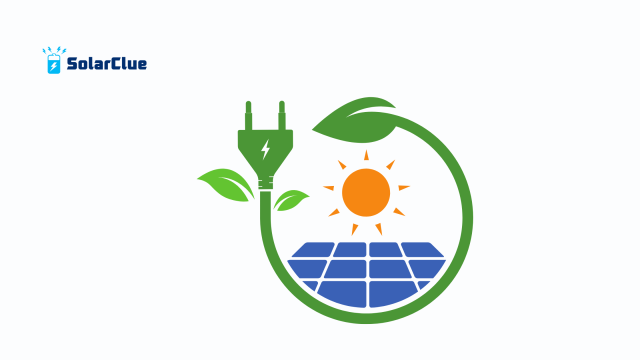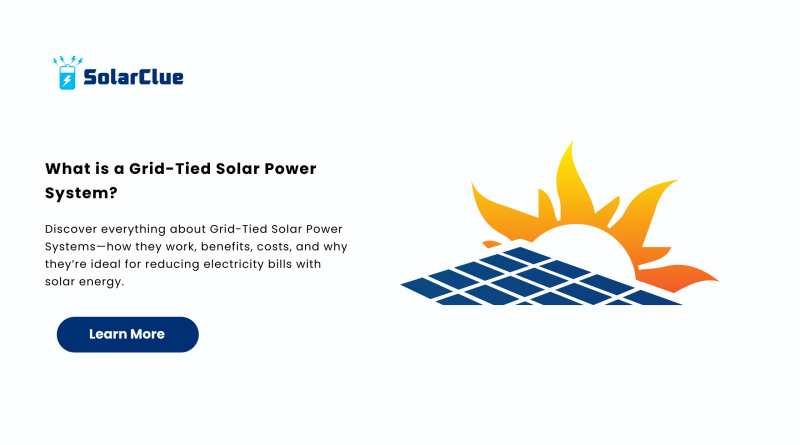What is a Grid-Tied Solar Power System?
In today’s energy-conscious world, more homeowners and businesses are turning to solar power to cut electricity costs and reduce their carbon footprint. Among the various types of systems available, the Grid-Tied Solar Power System stands out as one of the most efficient and cost-effective solutions. Seamlessly connected to the local utility grid, this system allows you to harness solar energy through solar panels during the day and draw power from the grid at night—striking a perfect balance between sustainability and reliability. Whether you’re looking to lower your monthly bills or make a smart environmental choice, understanding how a grid-tied solar power system works can help you make an informed decision.
Table of Contents
- 1 How Does a Grid-Tied Solar System Work?
- 2 Key Components of a Grid-Tied System
- 3 Advantages of Grid-Tied Solar Systems
- 4 Cost of Installing a Grid-Tied Solar Power System
- 5 Is a Grid-Tied System Right for You?
- 6 Limitations to Consider
- 7 Differences Between Grid-Tied, Off-Grid, and Hybrid Systems
- 8 Government Incentives and Subsidies
- 9 Maintenance Tips for Grid-Tied Systems
- 10 How to Get Started with Grid-Tied Solar
- 11 Common Myths About Grid-Tied Solar Systems
- 12 Real-Life Use Cases
- 13 FAQs
How Does a Grid-Tied Solar System Work?
Connection to the Utility Grid
The core of a grid-tied system lies in its connection to the utility power grid. During the day, solar panels absorb sunlight and convert it into direct current (DC). This is then converted into alternating current (AC) by an inverter, making it usable for home appliances.
Net Metering Explained
Net metering is a billing mechanism that credits you for excess electricity sent back to the grid. When your solar energy production exceeds your consumption, the excess is exported, and you receive energy credits. At night or on cloudy days, you draw power from the grid using those credits.
No Battery Backup
One distinct feature of a grid-tied solar power system is that it typically does not use batteries. Since the grid acts as a virtual storage, there’s no need for expensive battery banks, which lowers initial installation costs.
Key Components of a Grid-Tied System
1. Solar Panels
These are the most visible parts of the system. Solar panels absorb sunlight and generate DC electricity.
2. Inverter
The inverter converts DC electricity into AC, which is compatible with standard home appliances and the utility grid.
3. Net Meter
This special utility meter tracks the energy consumed from the grid and the excess sent back, enabling net metering.
4. Utility Grid Connection
The backbone of the system, this enables the two-way flow of electricity.
Advantages of Grid-Tied Solar Systems

Reduced Electricity Bills
By generating your own solar energy, you consume less from the grid, significantly reducing monthly bills.
Net Metering Benefits
With net metering, you can earn credits for the power you don’t use, which offsets your nighttime usage.
Low Maintenance
Grid-tied systems are straightforward and require minimal maintenance, especially without batteries.
Environmentally Friendly
Using solar reduces reliance on fossil fuels, lowering your carbon footprint and promoting clean solar energy.
Cost of Installing a Grid-Tied Solar Power System
The cost of a grid-tied solar power system depends on the size of the installation, type of solar panel, inverter efficiency, and labor. However, without the cost of batteries, it’s one of the most affordable solar setups.
On average:
- A 3kW system may cost around ₹1.5 – ₹2 lakhs
- A 5kW system can range between ₹2.5 – ₹4 lakhs
- Larger 10kW+ systems can go upwards of ₹6 lakhs
Incentives and subsidies in many states further reduce these costs.
Is a Grid-Tied System Right for You?
If your area has stable grid electricity and you’re looking to reduce your bills without the added expense of batteries, a grid-tied solar power system is ideal. It’s perfect for urban settings, residential properties, and commercial spaces.
Limitations to Consider
- Doesn’t work during power outages
- No energy storage option
- Dependence on grid availability
Differences Between Grid-Tied, Off-Grid, and Hybrid Systems
| Feature | Grid-Tied | Off-Grid | Hybrid |
|---|---|---|---|
| Battery Backup | No | Yes | Yes |
| Works During Outages | No | Yes | Yes |
| Cost | Low | High | Medium to High |
| Best For | Urban homes | Remote areas | Homes needing backup |
Government Incentives and Subsidies
Many state governments in India provide capital subsidies up to 40% on residential solar power systems. Make sure to check eligibility and apply through authorized vendors. This makes adopting solar energy more affordable than ever.
Maintenance Tips for Grid-Tied Systems
- Clean solar panels every few weeks
- Check inverter status periodically
- Monitor energy production via mobile apps
- Schedule annual professional inspections
How to Get Started with Grid-Tied Solar
- Energy Audit: Assess your monthly electricity usage.
- Site Survey: Check rooftop orientation, shading, and area.
- Get Quotes: Compare from multiple vendors.
- Choose Quality: Use Tier-1 solar panels and certified installers.
- Apply for Net Metering: Through your local DISCOM.
Common Myths About Grid-Tied Solar Systems
- “They’re too expensive” – Costs have dropped dramatically, and subsidies make it more affordable.
- “Solar doesn’t work on cloudy days” – It still generates electricity, though at reduced efficiency.
- “Maintenance is difficult” – It’s minimal and mostly self-manageable.
Real-Life Use Cases
Thousands of homes across India have adopted grid-tied solar power systems to cut down power bills by up to 90%. Commercial spaces like hospitals, schools, and malls are seeing major ROI within 3–5 years.
FAQs
1. Can a grid-tied system power my house during a blackout?
No. Since it’s connected to the grid without batteries, it shuts down during outages for safety.
2. How long does a grid-tied system last?
Typically, solar panels last 25+ years, and inverters last 10–15 years.
3. Can I add batteries later?
Yes, but it may require a hybrid inverter. Always check compatibility before installation.
4. Is net metering available in all states?
Most Indian states support net metering, but policies vary. Confirm with your local utility.
5. How much money can I save with a grid-tied system?
You can save 50–90% on your electricity bill depending on your system size and usage.
Start your solar journey today and make your home future-ready. Explore trusted solutions on SolarClue.com or dive deeper into insights on blog.solarclue.com – we’ve got your sun-powered dreams covered!




